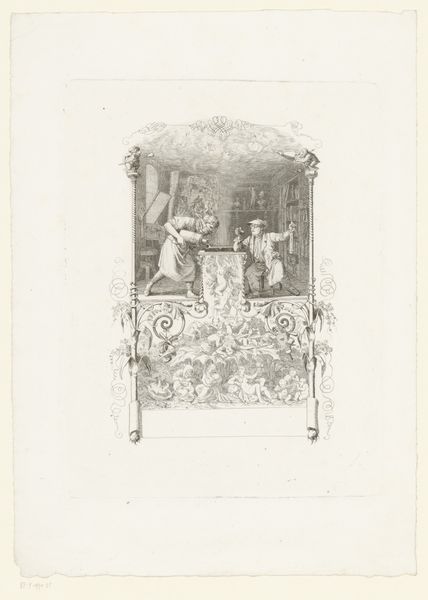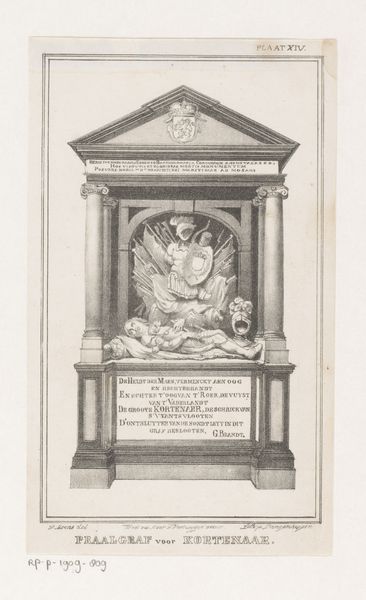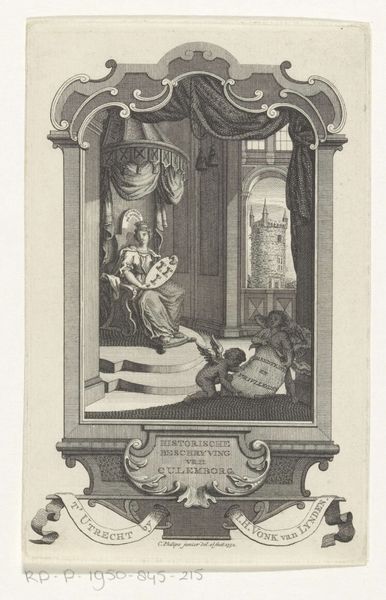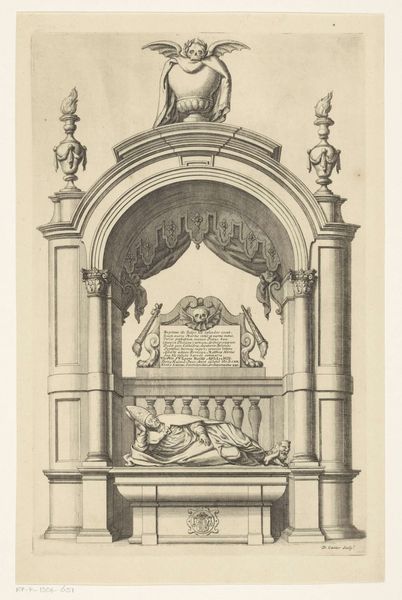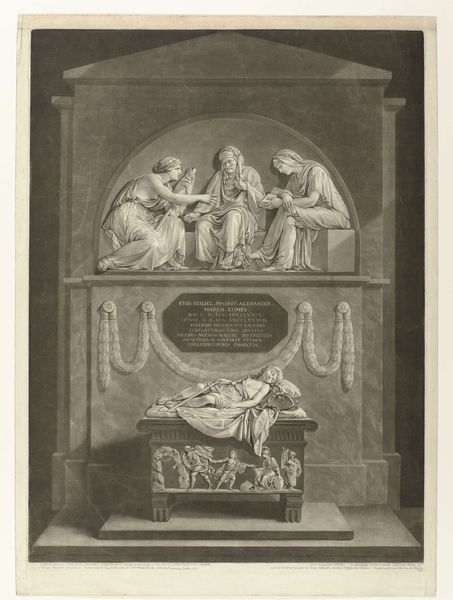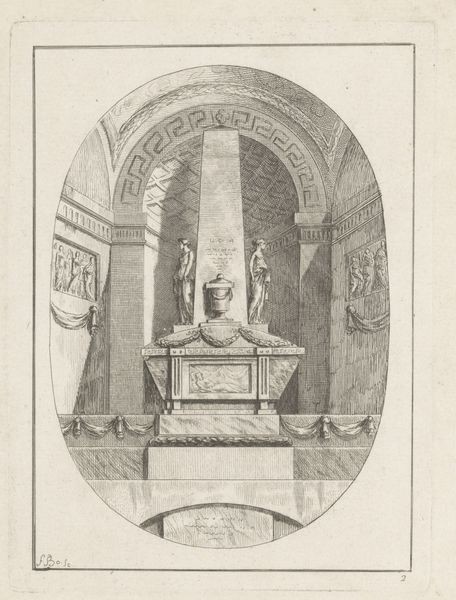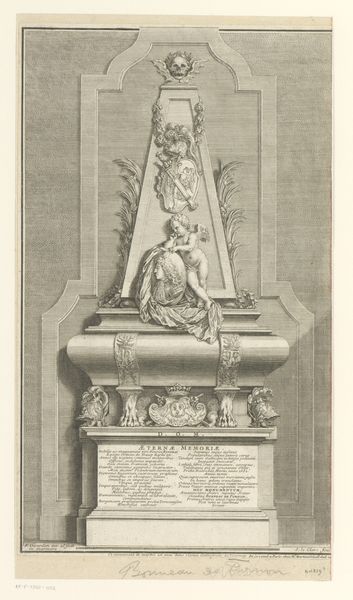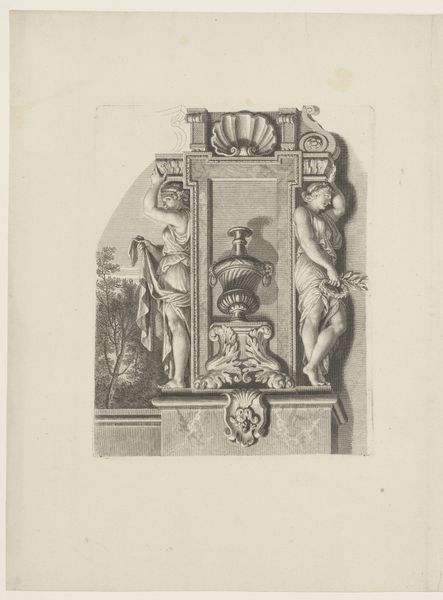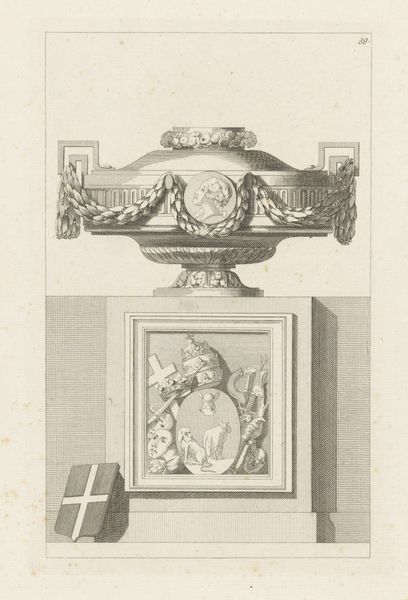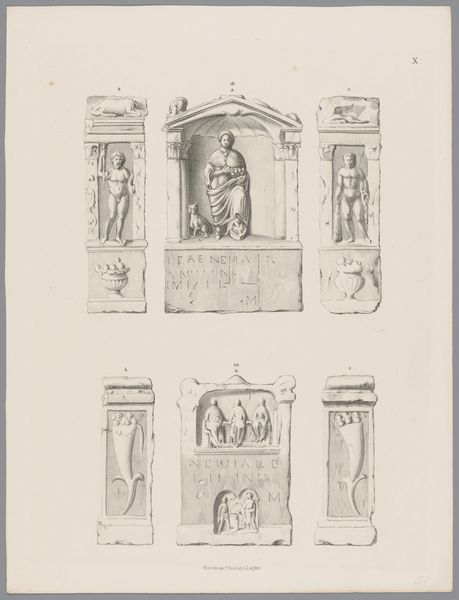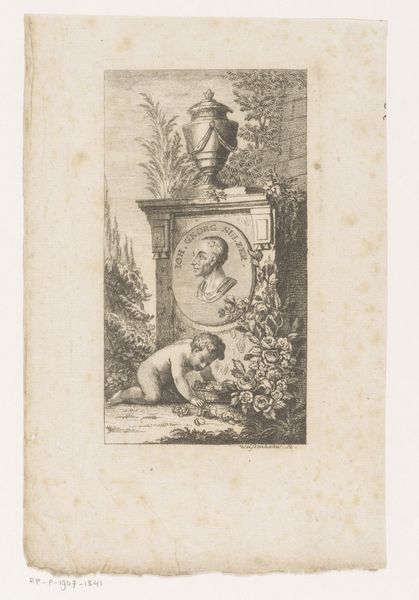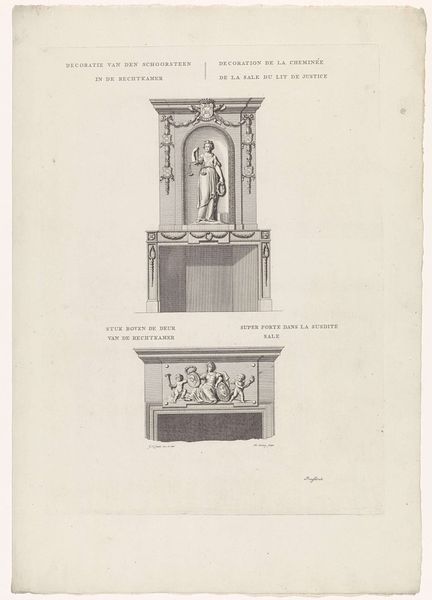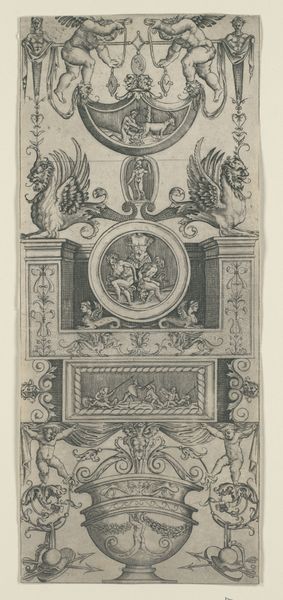
drawing, print, pencil, engraving
#
drawing
#
neoclacissism
# print
#
pencil
#
19th century
#
engraving
Dimensions: height 245 mm, width 135 mm
Copyright: Rijks Museum: Open Domain
Editor: So, this is a drawing titled "Grave Monuments of Jan van Galen and Hendrik van Kinsbergen," made sometime between 1809 and 1899. It's a print, likely an engraving, using pencil, housed at the Rijksmuseum. It feels… very formal, almost austere in its depiction of these memorials. What do you see here? Curator: I see the materials speaking volumes. The engraving, the print itself, is a reproduction. What did it mean to circulate these images? The mode of reproduction democratized access to the memorials, potentially fostering a broader sense of national identity tied to these naval heroes. Note how the artist emphasizes the stone from which the monuments are made – an earthly material which underscores themes of memorialization, and speaks to notions of labor and extraction that go into making such objects. Editor: That’s a compelling point – turning public grief into a commodity. These aren’t paintings; they're *prints*. Were these sold to the public, then? Curator: Precisely! And consider the labor involved. Who made the original sculptures? Who drew them? And finally, who engraved them, translating a three-dimensional object into a reproducible two-dimensional image? It reveals a network of workshops and specialized skill sets at play. Furthermore, how do the modes of consumption reflect society? Were these popular, affordable… or a marker of bourgeoise sentimentality? Editor: That makes me think about the relationship between the real, physical monuments and this... copy. Does the value shift at all, going from stone to printed image? Curator: It's a useful shift to note – both have utility as objects that embody remembrance and commemoration. But one, born from the other, offers more expansive reach, therefore perhaps even greater political consequence! And remember, the materials used for each memorial carry their own weight in meaning and socio-economic realities. Editor: I’d never really thought about how a print could be so politically charged just through its means of production. Thanks for pointing that out! Curator: It highlights how closely artistic creation is tied to production, dissemination, and broader historical factors.
Comments
No comments
Be the first to comment and join the conversation on the ultimate creative platform.
